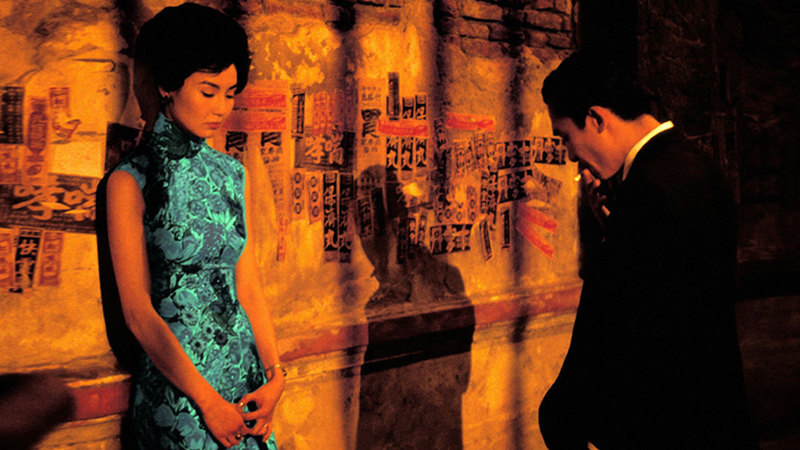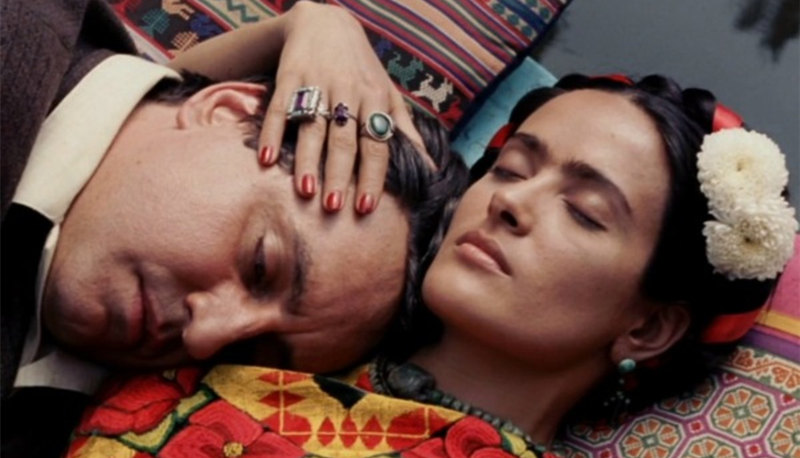The following review covers the Criterion releases of two films directed by Steven Soderbergh and featuring the monologist Spalding Gray: “Gray’s Anatomy” (1997) and “And Everything is Going Fine” (2010). This review has been cross-posted to our individual releases for each film, but the Video, Audio, and Extras sections address the specific release in each case.
I’ve dragged my feet for a few weeks on this review because I felt like I needed to revisit these two Spalding Gray films, but simply haven’t had the time. Considering the material, it also seemed appropriate to spend a little extra time questioning myself. Since the good folks at Criterion probably would like a review at some point, however, I’m forced to dive in while my thoughts still haven’t clarified.
My confusion stems from the way my attitude towards Mr. Gray changed while watching both “Gray’s Anatomy” (1997) and “And Everything is Going Fine” (2010), two films directed by Gray’s friend and admirer Steven Soderbergh. Gray was one of the most accomplished American monologists of the 20th century, but I readily admit the stage monologue is a performative art and rhetorical form I have no great fondness for. Soderbergh, however, was so fond of Gray’s work that he cast the one-man band in “King of the Hill” (1993) almost entirely because he thought a semi-autobiographical character in Gray’s only novel “Impossible Vacation” was a perfect match for the film role. Soderbergh was then so impressed by the experience of working with Gray that he pushed the idea of filming one of his monologues, the third time Gray would participate in such an adaptation (1987’s “Swimming to Cambodia” by Jonathan Demme and 1991’s “Monster in a Box” by Nick Broomfield preceding it).
In “Gray’s Anatomy,” the great raconteur spins a story around his strange medical odyssey. Gray began to notice blurry vision in his left eye and was diagnosed with the grim and slightly naughty sounding condition “macular pucker.” To de-pucker, Gray would need to have an operation, something both his therapist (Gray was definitely into therapy) and his then-girlfriend and co-scenarist Renee Shafransky encouraged him to get, but he was terrified to learn there was a slight chance of blindness. His monologue consists of his search for alternative therapies, a journey that puts him into contact with a series of New Age quacks, including a wannabe shaman who thinks she can astral project and a Filipino psychic doctor who really lets the blood flow.
As you probably know, F. Scott Fitzgerald wrote that “an exclamation point is like laughing at your own joke.” To keep an audience entertained for an evening by talking about his life, Gray had little choice but to exclaim frequently while excavating humor from his obsessive self-examination: it was OK if he laughed at his jokes because you were laughing even louder. With a flawless sense of timing honed over the years, Gray usually pulled this off without seeming too florid, but Soderbergh does him no favors with a series of overwrought stylistic choices. Soderbergh removes the audience from the equation by placing Gray on a darkened stage and adding in a liberal dose of special effects. Where Gray can subtly evoke a scene with his pacing and intonation, Soderbergh obviates the viewer’s need to imagine anything by mickey-mousing the imagery. Gray talks about light enveloping a woman and we see a bright spotlight on Gray. Gray talks about an encounter in a sweat lodge and he is enveloped by smoke, etc.
My impression was that Soderbergh didn’t trust Gray’s ability as a storyteller. Combined with my own distaste for New Age gulls (and Gray, or at least the version of himself in the monologue, certainly qualifies), I found it difficult to embrace Gray’s navel-gazing; his penchant for self-reflection seemed more mannered and indulgent than engaging and sincere. As soon as I watched “And Everything Is Going Fine,” I realized I was completely mistaken.
In 2004, the 62 year-old Gray disappeared and his body was later pulled from the East River after an apparent suicide. Gray had spoken often of his mother’s suicide and suffered from depression, particularly in the aftermath of a car accident in 2001 that left him partially disabled. Gray’s wife Kathleen Russo approached Soderbergh with the idea of shooting a posthumous documentary and the director was quick to take up the challenge. This time he set aside all of the visual pyrotechnics of the first film for a documentary culled exclusively from hundreds of recorded hours from Gray’s performances and media appearances over the years. Thanks to a prodigious editing effort by Soderbergh and editor Susan Littenberg, the film composes a dazzling and intimate portrait of Gray that is arranged thematically rather than chronologically (Gray repeated his monologues many times over the years), but still appears to tell a story from start to finish… and then back to the start again.
Gray first appears in grainy video placing a glass of water on a wooden desk and addressing the crowd. It’s the most humble, no-frills origin story ever told, and Gray gradually emerges as a neurotic super-hero who gains mastery over his special powers of wit and analysis. We learn of his upbringing in Rhode Island with a distant father and a Christian Scientist mother who eventually killed herself, his development as a performer through his work with The Wooster Group in New York, and the various sexual and romantic entanglements that structured his life and art. Gray was able to reveal everything about himself while still carefully controlling his persona; he was never quite the Spalding Gray, but rather a thousand shades of gray, depending on which one best matched the occasion. We see him grow as both an artist and a man, eventually becoming a husband and father, something that was definitely not part of his plan even well into middle age.
The exuberant performer’s story turns tragic after his accident, but the film wisely avoids direct mention of Gray’s suicide. We know. Knowing from the very first shot lends the footage a special aura, and it becomes a vital mission to preserve this intrepid spirit for one more great performance which seems both “new” and already lost to time, with Gray alternately manifesting as a spectral presence and as a vividly present force. It’s all quite deeply moving, and if you remain untouched by the end credits, you have some self-examination of your own to do.
Video:
The film is presented in its original 1.33:1 aspect ratio. As discussed, the film is composed entirely of archival footage: Gray’s monologues, television appearances, and even still photographs. Obviously the image quality varies depending on the archival source and the 1080p transfer can’t compensate for weaknesses in some of the videotape sources (which may actually suffer more from an HD treatment that highlights their shortcomings), but overall this is probably as strong a transfer as could expect.
Audio:
The linear PCM Mono track also varies depending on the sources, but the overall film benefits greatly from the fact that even in the earliest material the audio is surprisingly good even when the video isn’t. It all sounds a bit flat but the dialogue is always clear and that’s what matters the most. Optional English subtitles support the English audio.
Extras:
The “Making of” feature (21 min.) consists of new (March 2012) interviews with Soderbergh and Kathleen Russo, Gray’s wife and creative partner who also served as producer on the film. Russo offers special insight on Gray, including the revelation that Gray never really recovered from the trauma of 9/11.
“Sex and Death to the Age of 14” (64 min.) is a recording of Gray’s first monologue. It originated during his work with the Wooster Group and premiered on April 20, 1979. This performance was videotaped at The Performing Garage on Oct 29, 1982.
The disc also includes a Trailer.
The 16-page insert booklet includes an essay by Nell Casey, editor of “The Journals of Spalding Gray, An Uncertain Inheritance” as well as a reproduction of two hand-written pages from one of Gray’s journals and some family photographs.
Film Value:
Perhaps it’s fair to ask why these two Soderbergh films about Spalding Gray were released separately, each at a $39.95 retail price point. Surely a Spalding Gray set at, say, $59.95 would have been a bit more consumer friendly. Even though I think the second film is vastly superior, I suspect most potential customers will want to own both films. Regardless, while the extras aren’t elaborate, each disc does include an entire videotape Spalding Gray monologue in addition to the main film, surely a treat for any fan of his work.


